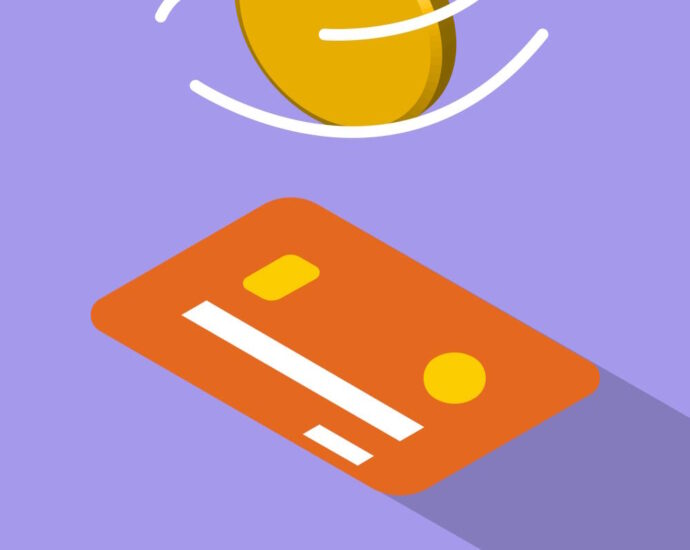Even with repeated predictions of a downturn, Americans have been purchasing cars, taking trips, and dining out at levels rarely matched in the past. At the same time, credit card balances “spiked by $154B year over year, notching the largest increase since 1999.” If you find yourself burdened with high debt levels and little or no cash, you may be wondering where to start: should you pay off your debts or build up your cash reserves? Here’s one plan that can help you do both.
Determine where you are
Before you decide how much to save or what amount to put towards each credit card, take the time to tally up your bills. Yes, you should look specifically at your credit cards, but while doing the research also look for items that you could quickly cut out of your budget – think subscriptions, memberships, etc.
Also consider what level of a cash cushion you would need to feel comfortable. If it’s just you, perhaps $500 or $1,000 might be enough of an emergency fund while you’re paying off debt. If you have a family or are the sole bread winner, you might want to try to save up a little more.
Step one: Pay at least the credit card minimums
Once you’ve got a total on your credit card bills, take a look at the minimums you must pay each month to keep your account current. How does that fit into your budget? Paying the minimums every month won’t help you pay off your bills, but it will keep late fees and other penalties from accruing.
Step two: Start your emergency fund
After you’ve paid the minimums on your cards, start reaching for your savings goal. While this may not total the three- to six-months people recommend you save, it will help insulate you from the occasional surprise expenses that too often end up on your credit cards.
Meet Bob
Bob has enjoyed life over the past couple of years. He got Covid early on, and since then has had a joie de vivre attitude of I deserve what I want. Unfortunately, the cash he received from Uncle Sam went quickly, as did much of his savings, and he now has three credit card balances totaling $10,000.
His credit card minimums are $350, and he thinks if he had just an extra $1,500 he wouldn’t have to put so many surprise items on his cards. If he wants to hit his savings goal in six months, he would need to save $250 each month, along with the $350 needed to keep his cards current. Bob thinks that sounds doable.
But after cutting spending and expensive dinners out, Bob actually believes he could send a little more to one of the accounts, either his debt or his savings.
Step three: Reevaluate
Whether you’ve done this on paper or actually started sending money to the various accounts, if you have a little extra take a minute to reevaluate your assumptions regarding savings. Is your car newer or seemingly in the shop all the time? Do you have expenses you already know will be coming up in the next few months? Are the holidays around the corner? Are taxes due soon? What are the expenses that will derail your savings plan?
If you foresee the need for more cash soon, then consider paying only minimums on your credit card until this time period passes. For instance, if you can get through the holidays by using cash only, you can increase your credit card payments in the new year.
If you don’t see high expense items on the horizon, think about putting any extra toward your highest interest rate credit card. Keep paying the minimums on all your cards, and once the highest interest card is paid off then move that money to your next highest interest card.
What about investing?
I’ve read articles where some people say to make sure you’re contributing up to the match on your retirement plan, or even consider investing on your own. The problem with that is you’re paying high interest rates, perhaps as high as 25%, while the average stock return is around 10% or less. This is one of those gray areas. If you are saving enough and have a good start on your credit cards, examine what effect a 1% or 2% increase to your retirement plan contribution would make on your budget. Would you still be able to make your other payments, including savings? If so, that may be a good decision.
Live within your means
Wherever you decide to allocate your money, and in whatever percentages, the main thing for someone who has been overspending is to rein it back in. This may be painful for a while, especially if you have to cut a gym membership or reduce your streaming services to only one. But this doesn’t have to be permanent starvation. Once you have your spending under control, and your credit card bills are paid in full each month, it’s okay to add in items that you truly want. Just make sure you really want something you’re paying for and that you can afford it without just plopping it on the credit card. Going back to five streaming services just because you had five in the past doesn’t make a lot of sense.
Trying to pay off credit cards while saving is like performing a balancing act. You may put a little too much in savings or the credit card bills initially, but with time you will find a happy medium that will help you pay off your cards while saving a little extra for unexpected bills.
Photo by monstera production
